photographers
Do you make an impact with your Photography?
01/09/13 09:48 Filed in: Photography & Art

Photography is a powerful tool for team buildings, trainings, as fine art, as leaning tool, documenting history, as the family memory and in many more ways. With every picture you take you make an impact in some way on people and the world. Never thought about it?
It might sound silly that you make an impact with the picture of a flower or with the hundreds of wildlife photos or with the family holiday photo. But you do. The flower picture might make someone very happy on a birthday. Your wildlife photography might create consciousness on conservation. And your family photo will tell future generations about their ancestors.
Every photo counts. You can make a difference, just by sharing the image of a beautiful flower.
Happy snapping!
Ute Sonnenberg for www.rohoyachui.com
On Photo Safari: Safety Travel Tips for Photographers
30/03/13 10:33 Filed in: Photo Safari
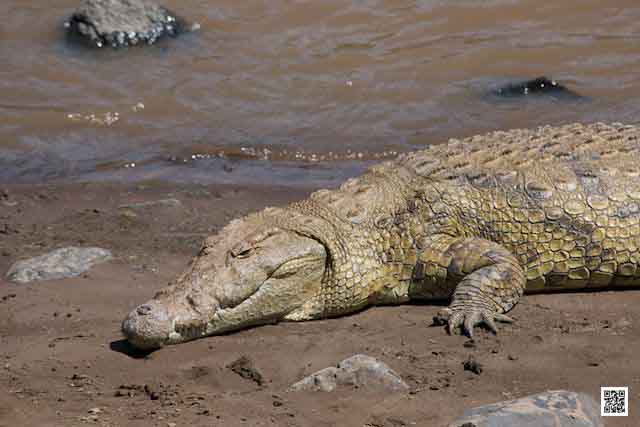
Traveling for photography is the most wonderful thing to do; yet one needs to be conscious of the dangers involved to ensure a great experience and fantastic photos.
This applies to all photography travel no matter where in the world. As a photographer one carries expensive photo equipment and this can attract the interest of the more shady kind of people. So, make sure your equipment is insured in the first place. That gives already a peace of mind. But you want to photograph and not to loose it, so take precautions to be safe during your trip. When traveling in a group do not drop your guard, because you think you are fine as a group. If everyone in the group thinks that drops the guard, everyone will be a soft target for thieves. Yet its understandable that you want to focus on photography not thinking of anything else, so, make clear who in the group is taking care of safety and if you travel alone, find somebody to cover your back.
Another important safety aspect is to make backups of your photos on several external hard drives and just as at home, make sure one backup is off site, which means while traveling keeping them in different places and send one backup home, if possible. Read for more details also Joey L.’s travel tips.
Choose safe accommodation as a “home base” from where you go on your photographic explorations. For example when you want to photograph Andalusia choose a hotel that is safe and in a central location to be able to see all you want during day trips. This has several advantages. You can tell the hotel where you are going and when you think to be back. They will be able to follow up on you, if you are not returning as intended. The hotel will also be able to advice with directions and sights you should see and you avoid carrying around all your things or to pack and unpack every day. I do that anywhere that way, in Spain just as in Nairobi. The locals always know where to go, how to get there and what to do in emergencies. Just choose carefully the accommodation.
The advantage of going on pre-organized photographic safaris is that you are traveling with experienced guides and adequate safari vehicles. Yet be careful with the choice of the safari operator with regards to the vehicle and the quality of the guide. For our photography courses in the bush we always choose operators with qualified guides and 4x4 vehicles and this works very well. They are usually from good camps or lodges that provide also safes in their tents or rooms. They are not the cheapest, but provide higher safety. If you rather travel budget and solo, just be cautious and take in Joey’s tips.
Travel safe and happy snapping!
Ute Sonnenberg for www.rohoyachui.com
Annie Leibovitz: Reflection
11/03/13 09:03 Filed in: Photography & Art

Sometimes a photographer needs moments of contemplation to reflect on the work she/he is doing, the photography she/he is doing and how happy one is with what one does. In this video a young Annie Leibovitz is reflecting on her portrait work, how she feels about it and how she experienced photographing John Lennon on the day he was killed. She expresses the wish to have time to be out, only she and her camera for two or three weeks, just to photograph what she wants, sees and loves.
Isn’t this exactly the dilemma when the photography business goes well for a photographer that suddenly there is no time anymore to just enjoy photography in its pure and essential way, just the photographer and the camera and no clutter around? This might be the moment that photography becomes again a hobby for the photographer, as funny as it might sound. And the photography guide starts craving a photographic safari just for him/herself and a photography teacher wishes to attend a photography course just for him/herself.
It is probably the danger when making your hobby and passion your work that you might lose the passion and love for what you are doing. I don’t know how Annie Leibovitz feels about this today, yet its great to hear how she felt about it at a younger age.
Keep having fun and joy when snapping away! Keep listening to your heart.
Ute Sonnenberg for www.rohoyachui.com
On Photo Safari: The Photographer
16/02/13 09:30 Filed in: Photo Safari
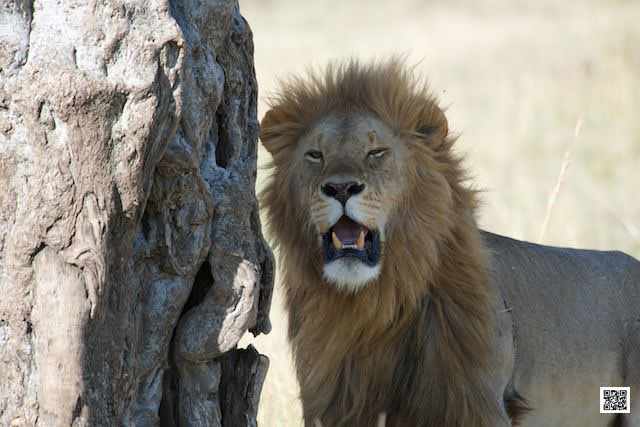
There is lots of attention for camera gear when being on a photographic safari, what lens to bring what settings to use, but there is an essential factor that is often forgotten, the photographer and I don’t mean the ability of the photographer to operate the camera, its something more subtle.
Photo safaris take the guests out on open 4x4 jeeps (strongly recommended to go to places where they are doing it like that and with only 6 people on the vehicle). That means there are two people in a row and if you are lucky you got a row for yourself. Experience from wildlife photography courses taught that it proofed to be hard to get the photographer moving in his/her row, really moving not only leaning over. Wildlife can be on either side of the vehicle or move to the other side of the vehicle and in order to get the best shots the photographer should move too, but often is glued to the spot.
How is this possible? Think of yourself how often you were standing on a spot photographing a scene and getting annoyed that people were walking somewhere on the side or other obstacles suddenly turned up. Did you think of moving yourself to a different spot to get the good shot? One reason to not move is the composition we see just there, but there is more, especially in the bush or other challenging environments. We are feeling comfortable and we like to keep it like that, moving seems then uncomfortable and we resist, stick to where we are and don’t move.
But this is just the point, one got to be willing to move/change in order to get great results and discover different perspectives. Photography is also a physical activity and means physical efforts for the photographer, although its tempting to forget about that, but its crucial.
Keep moving! Keep having fun!
Ute Sonnenberg for www.rohoyachui.com
How to Learn from Manuel Rivera-Ortiz
11/02/13 09:22 Filed in: Photography & Art
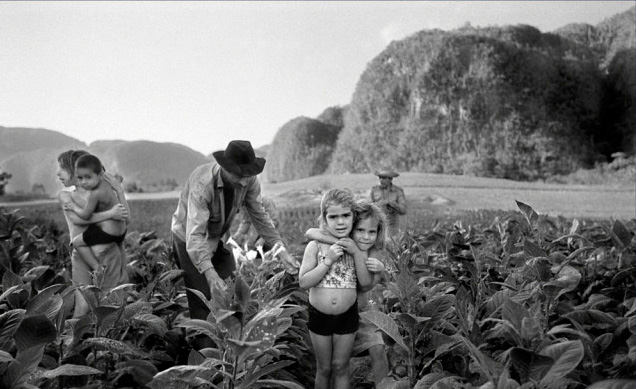
Manuel Rivera-Ortiz is a photographer known for it’s intriguing documentary style photography one connects with the Magnum Photographers.
He was born in Puerto Rico and came with his father and siblings to the United States when he was still very young. Rivera-Ortiz was a good student and worked for years as a journalist for newspapers. Not that long ago he caught the photography bug and since then he inspires with his fine art photography work to address social issues with the camera in a beautiful way.
Rivera-Ortiz only surrendered to photography in 2001 and in 2010 he started the Manuel Rivera-Ortiz Foundation for Documentary Photography and Film, what a wonderful success story.
What does that teach us? Live your dream.
Ute Sonnenberg for www.rohoyachui.com
Photography and the Money
25/01/13 07:58 Filed in: Photography & Art
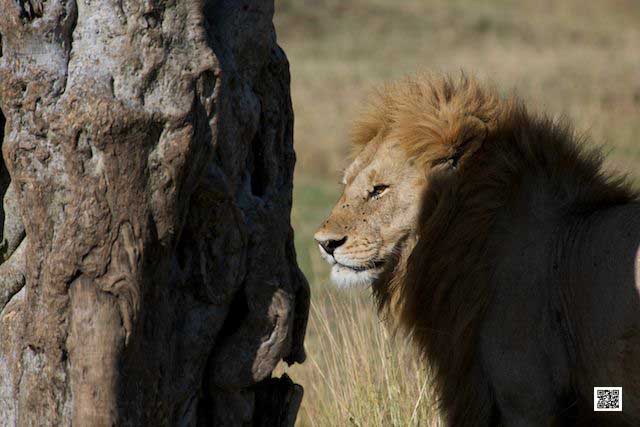
Collectors are usually careful or even skeptical with regards to fine art photography. A photograph might be reprinted in the future and the investment would be lost. But confidence is growing and experts think that the modern and contemporary photography art market will grow. Within the last year, new heights in fine art photography auctions were achieved and high prices were paid.
What does that mean? With photography now being an everyday part of life for billions of people around the globe its fine art is also more recognized and valuable for collectors. And photography itself has become big business through the cell phone market and camera equipment and it will be even bigger in the future. Photography is the future and that reflects in the art market as well with rising prices for fine art photography.
But how will photographers benefit from that? This is hard to say. Maybe a comparison from hospitality business can shed a bit light on that. Imagine you have a bar in a street where no other bar is. You think that’s great, because there is no competition, but that means also that the customers need to come especially to this street to visit your bar. How many people will do that? Some, but not many. Imagine you have a bar in a street where many other bars are. You might think that’s tough, because there is lots of competition, but it is the opposite. People know that there are many bars in the street and they have a choice, they can move around between bars the whole night if they want and that makes them come to this street. And where many customers are there is a chance that they will visit your bar too. The same works in photography. Many photographers make lots of photography and lots of photography makes lots of people interested in photography and the chances that people love your photography is higher than in times that only few people were doing photography.
Confused? Don’t think too much about it, just enjoy photography and follow your passion. The rest will come.
Ute Sonnenberg for www.rohoyachui.com
What is Success in Photography?
23/01/13 08:06 Filed in: Photography & Art

“As a self-taught filmmaker who spent the last year trying to get his first real project up and running , I've come across my fair share of disappointments, near misses, and financially tight times. As with any startup or personal project, finances are scarce and it's often your passion for the project and support from family and friends that carries it through. For all entrepreneurs (especially those on the artistic side, like me), creating something of your own isn't about making money--it's about being successful in the way that you personally define it.” (from article by Kerrin Sheldon)
Kerrin Sheldon’s definition of success is doing something that you love. In his case its filmmaking and it applies just as well to many photographers. Some are self-taught photographers, others did several photography courses or studied photography, yet it’s the passion and love for photography that connects them. They succeed in doing what they love to do and that makes them happy.
And isn’t happiness what we are looking for in life? Well, maybe a new camera or two contributes to happiness too, but the love and passion are the real fun.
Happy snapping!
Ute Sonnenberg for www.rohoyachui.com
A Story of Disruptive Innovation and Photography
22/01/13 16:59 Filed in: Insights & Opinion | Photography & Art
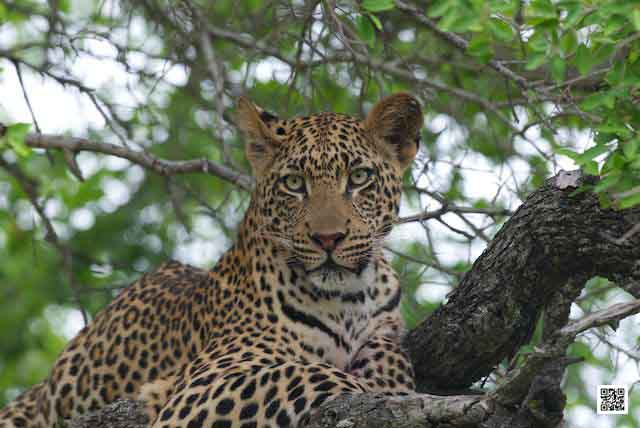
Good ideas often come while we are doing something very boring like driving on the freeway, washing the dishes, doing ironing or other monotone work. We get in some kind of a trance and our thoughts start wandering away and sometimes to places where ideas wait to be discovered. Our mind gets somehow switched off and the intuitive level takes over. In other words our usual thoughts are put to sleep.
Now we got this amazing idea, we quickly finish the dishes and go straight behind the computer to work the whole thing out for implementation into practice. Lets say the idea is a new kind of team building that uses photography to align the energies of the individual team members in order to accomplish the team goals. This might sound complicated, but it is not, its only photography and it will feel like a normal photography course, only the results will be more beneficial for the team. Lets call it an innovative application of photography for business.
How do others experience this innovation? Some will see immediately the fun of photography and will be curious to discover new exciting things. Others might be skeptical and might feel a bit uncomfortable, not knowing how the whole thing will work. For them it might feel disruptive, different from the usual team building they always had and reluctance might creep up, tempted to reject the innovative approach of the team building.
What will win, the reluctance or even rejection or the curiosity, fun and excitement? This is the moment when leadership is needed. At the end the leader guides the team to new success and sometimes something has to disrupt the routine to achieve new levels of achievements.
Another example: Who remembers the Reebok Pump? Here what happened when the innovation was introduced to the responsible people:
“When Continuum pitched an idea to Reebok for a new basketball shoe that would use inflated air to better support the ankle, thereby reducing injuries, the brand manager for basketball shoes said he wasn’t interested because he had never heard about a need for that from a focus group. When we proposed the idea to a high school basketball team, the response was even worse--the players openly laughed at the concept.
But when the team members actually used an early “experiential model” of the shoe during practice, they were won over by how cool it was to have a shoe form-fitted to their feet. Over time, they were even more enthusiastic as they realized they could play more confidently without fear of injury. Like that, the Reebok Pump was born.” (via Co.Create, read the article here)
The Reebok Pump could be called a disruptive innovation. It obviously disrupted the usual thinking and doing, yet when eventually tested all were happy.
There are plenty of examples like the Reebok Pump, also in art and photography. People disliked the painting style of Van Gogh. It was different from the style of other successful painters at this time and Van Gogh’s style might have been experienced as disruptive.
Long story short, disruptive innovation is something revolutionary and photography is a wonderful medium for innovation, within photography and beyond. Use it and be not discouraged when some people might feel disturbed. You might be a new Van Gogh or Rembrandt!
Keep snapping!
Ute Sonnenberg for www.rohoyachui.com
How to Learn from Sting
21/01/13 15:17 Filed in: Photography & Art

How do you create albums and photo books? How do you choose an image from a whole lot of photographs? How do you choose a photography course or art class out of the broad spectrum of choices? How do you choose your travel destination for your holiday?
I might sound far fetched to through together photo books, albums, photographs, holidays and photo courses, but they got one thing in common, the question how you start creating or making a choice. It is in essence the same intuitive process no matter if you are creating a photo book, a holiday, choosing a course or a photographic safari, your intuition makes the choice and takes the lead. And this creative process often includes a technique called semantic intuition, a brain storm technique.
Sting said in an interview that the song title comes first and then he writes the song and so do more famous writers as you can read below:
“The oddly named, but extraordinarily powerful technique was invented by Helmut Schlicksupp, an employee of the Battelle Corporation’s office in Germany. Semantic intuition is a word-combination technique where brainstormers name an idea first, and then try to figure out what the new idea might be, given its name. As counterintuitive or even as impossible as this group idea-generating strategy might sound, there’s actually a precedent for it in the creative arts.
It was in an interview with Larry King many years ago that Sting revealed that he will often get a title for a song first, and then he will go ahead and write the song. Neil Simon, in his second autobiography, revealed that he came up with the name for the play The Odd Couple first, and then wrote the play. And legendary screenwriter William Goldman adopted a similar name-it-first creative strategy when he asked his younger daughter what she wanted him to write a story about. She said “a Princess.” Then he asked his older daughter what she would like him to write a story about. She said, “a bride.” He put them together, and we got his novel--and then the movie--The Princess Bride.”
(read full article from Fast Company here)
Does that sound familiar to you? Don’t you have an idea for a photo book first and maybe even the title and then you start choosing the images and layout?
Think about it. Maybe you are very strong in semantic intuition. Use your strength and create amazing art.
Enjoy your intuition!
Ute Sonnenberg for www.rohoyachui.com
On Photo Safari: Auto ISO
19/01/13 08:39 Filed in: Photo Safari

From the point and shoot cameras to the professional digital cameras, all have the feature “Auto ISO” and although one might have learned during a photography course how to use the manual ISO settings, one often goes just back to use Auto ISO. It’s just convenient.
And it might work in most of the situations, but not as well when being on a photographic safari. Photographing in the bush is different and the auto settings often fail to match the light conditions there. The Auto ISO often goes too high and the images look washed out. Use in normal bush bright daylight ISO 100 and you will be fine. But keep looking at the light and adjust the ISO manually when the light gets lower. You will see the results are much better. Depending on what manual setting you prefer, rather leave the ISO at 100 and play with the aperture.
Happy playing!
Ute Sonnenberg for www.rohoyachui.com
Take an External Perspective for Better Insight
17/01/13 08:23 Filed in: Insights & Opinion
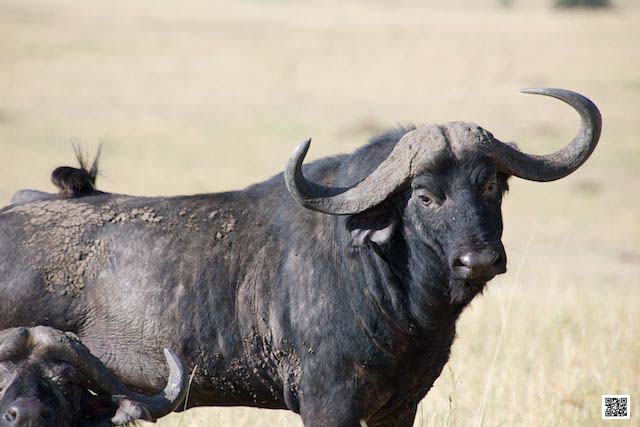
When you visit a museum, where do you stand to look at a painting? Do you stand right in front of the wall, your nose almost touching it or do you stand looking from a distance? Well, if you want to see exactly every brush stroke, you got to come close, but when you want to see the entire masterpiece, you got to watch from a distance.
Talking about an accident is easier when you were witnessing it rather than being involved yourself. You might become emotional while talking when you are one of the victims.
These are two everyday life examples, that having a distance allows a better view on things in their complexity. One can “walk” around a problem or case and see all its aspects from different angles, which result in deeper insights. Innovative leaders will practice that method and photographers do that as well, constantly.
Pretty much every camera has a zoom and if not in the camera, the photographer has most likely a zoom lens. And what are they doing? Zooming in and out constantly to capture the subject the way they experience it, some more closely, others more from a distance. A photographer has always an external perspective and that makes it possible that they can photograph scenes one can hardly look at. Like being a victim of an accident or witnessing an accident, being a witness gives the distance and the insights.
Ute Sonnenberg for www.rohoyachui.com
Dont' Fear Failure, fear Fear Itself
15/01/13 11:47 Filed in: Insights & Opinion

What do you think about yourself as photographer? How do you feel when others look at your photographs? Probably you feel insecure and afraid that they might not like your photos. Maybe you think during a photo assignment constantly “I hope they will like it” and in photography courses you dare not to ask a question. Sound familiar?
If your answer is yes, you will also know how the results look like when you were afraid of failure during a photo shoot. Most likely you were not happy with them. Maybe your camera was shaking and the subject was not in focus. And for wildlife enthusiasts a lot of other fears can come on top of the fear of failure during a photographic safari, like the fear of the camera getting to dirty, the fear of getting lost or of being run over by elephant. Seems that there are many things in photography one can be afraid of. But the one thing one really needs to be afraid of is the fear itself.
Being afraid makes a photographer being less engaged with the light and subject and even worse, the fear will show in the images.
Be conscious that not everybody will love your photographs, but that doesn’t mean they are a failure, they just do not appeal to them for individual reasons. And there are no stupid questions. So, just ask what you want to ask in any photography course. Learn from other photographers, but do not compare yourself with their awards and magazine cover success. You are going your own way in photography and who had thought that Van Gogh would be world famous now at the time he lived? Maybe just time is not ready for you, but you are ready to enjoy your photography and keep doing that and be not afraid, there is no failure.
Happy snapping!
Ute Sonnenberg for www.rohoyachui.com
Picasso: Painting by Heart
14/01/13 08:55 Filed in: Photography & Art
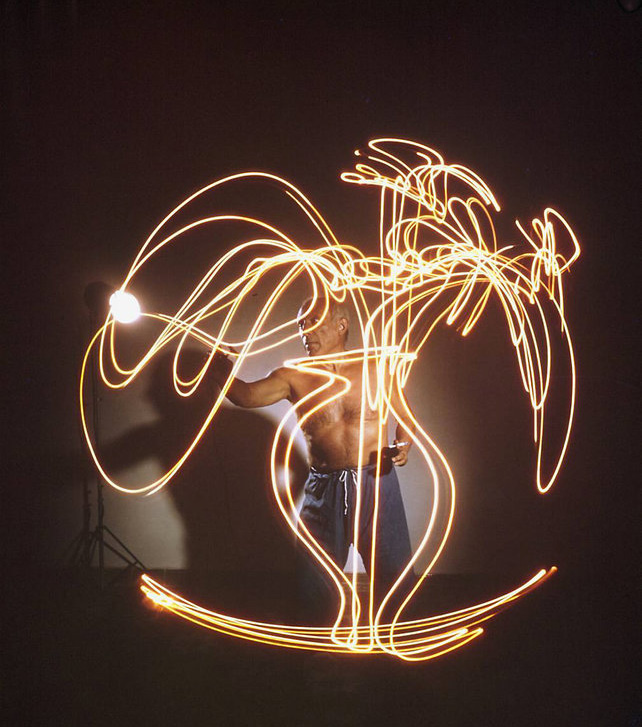
Light painting has become a very popular kind of photography nowadays and there might be even photography courses in light painting to learn the technique. Only as a side note, photography itself is painting with light, but we understand as light painting now, that somebody holds a light source and paints with it while a camera captures the process.
It turns out that light painting is not new. Picasso did it already in 1949. The Albanian photographer Gjon Mili introduced him to it and Picasso was thrilled. Read here what Mili and Picasse created for Life magazine:
“So Picasso did his thing, in various darkened rooms of his studio. He drew a centaur, the figure of a woman, an elephant, and various faces using a small pen light. “He was so fascinated by the result that he posed for five sessions,” wrote Life magazine, for whom Mili was freelancing at the time. “Mili took his photographs in a darkened room, using two cameras, one for side view, another for front view. By leaving the shutters open, he caught the light streaks swirling through space.” The resulting images were published in a 1949 issue of Life, recently resurfacing after the magazine published about the archived images.”
(read the complete article from Co.Design here)
There are other images showing Picasso creating paintings with one stroke and they are already impressing, but this is just stunning. Be aware he doesn’t see what he is painting, at least not with his eyes. If there is any proof necessary, this shows clearly that painting was in his heart.
Wanna try yourself? Paint with your heart!
Ute Sonnenberg for www.rohoyachui.com
Annie Leibovitz: Ups and Downs
07/01/13 17:16 Filed in: Photography & Art

In 2007 Annie Leibovitz had to put up her entire work and future work as collateral for a $24 million loan and now she put her NYC compound of three townhouses on the market for $33 million.
Lets see it as a smart move to get the rights of her work back. She is one of the most sought after commercial photographers and did only last year the great photo shoot with the American Olympic team for Vogue.
There can be ups and downs for photographers, but it might be a consolation that a photographer can even reach those heights as getting a $24 million loan for ones work.
Keep shooting!
Ute Sonnenberg for www.rohoyachui.com
The Infinity of Photographs for Music
02/01/13 18:11 Filed in: Photography & Art
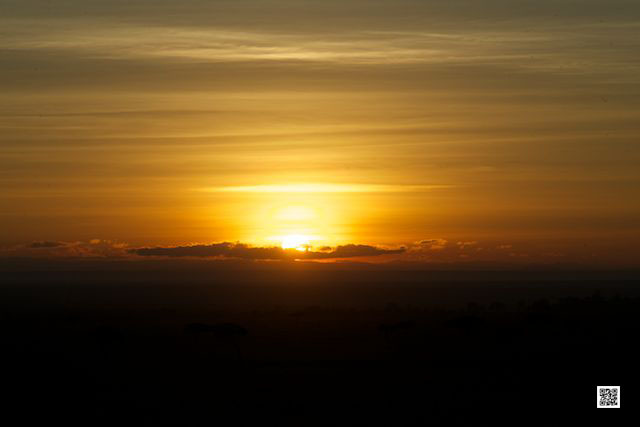
An image is endless. A photograph is a captured moment, yet a moment of infinity and so is the photo, infinite. No rewind, no replay button, its doing it all by itself.
With music one had to rewind and/or press replay to listen to the favorite song again, but not anymore. For those who cannot get enough of Gangnam Style or other persistently for replay asking hits Infinite Jukebox has arrived.
Read how it exactly works here and experience the infinity of a song, just like the infinity of a photograph.
Or are photographs a bit different infinite?
Ute Sonnenberg for www.rohoyachui.com
Popular Camera Settings 2012 & Their Meaning(lessness)
31/12/12 18:07 Filed in: Photography & Art

Reuters made a list of what they think the best photographs taken in 2012 with a whole range of information including camera settings.
Now the photography enthusiast and Reddit user hallbuzz made a list of all the camera settings of the 95 images from the Reuters list including camera brand, lens type, shutter speed and f-stop. Then another Reddit user mathiasa turned all this information into charts. See the charts on petapixel.
When looking at the charts one could be tempted to think that in order to be one day on the list of the 95 greatest photographs of the year, chosen by Reuters, one just can buy the equipment mostly used and the settings mostly applied. But is that so?
How often do you shoot a sports event like the Olympics? Are the best photographs shot with a Canon, rather than with a Nikon?
What are the charts tell? Photographers of press agencies get equipped by their employer and the employer chooses a camera brand of good quality he can get a good deal with. Same for the lenses, reflecting also in the f-stop stats. And from there it’s a bit of everything, depending on subject and location.
So, what does this example of stats of popular settings tell us? There is nothing like a popular setting one can just use, because others do. Camera settings always depend on the light and nothing else.
Happy snapping!
Ute Sonnenberg for www.rohoyachui.com
Safari Story: Leoaprd Teens and a Stressed Mom
29/12/12 18:02 Filed in: Safari Story

We had planned to stay the whole day out, with packed breakfast and the lodge would bring us lunch later. We were on a photo safari in the Sabi Sand in Kruger National Park in South Africa, the heaven for leopard photography lovers.
Staying the whole day out in the bush has the advantage that you can stay with the animal when you eventually found it and follow it the entire day. We had found a female leopard. She had two pretty “old” cubs of about 18 months old, two boys, still staying with her. Usually the cubs have to live on their own by this age, but the boys seemed to enjoy their mother’s care and were in no rush to live on their own and do all the hunting themselves. The mother is a good hunter and also this morning she had a kill hoisted in a tree. But there was no sign of the boys. After she had fed on the kill for a while she started calling for the boys. No response. She started walking away from the tree looking and calling for the boys. The calling is a gentle sound, heard by the cubs and telling them mom is calling and expecting response. But nothing. The mother kept going and calling and after about one hour doing so, she seemed to have enough. Now she was really calling, a loud, strong leopard call that made clear she will take no nonsense anymore. And suddenly one of the boys popped up, just a few bushes away from her approaching her in apologies and trying to sooth her anger. After a moment of accepting the cubs attempts to make it up again, they wandered off to the tree with the kill.
Ute Sonnenberg for www.rohoyachui.com
Photo Safari Essentials eGuide
Photography Rankings and What They Mean
27/12/12 12:29 Filed in: Photography & Art

“Ten percent of all of the photographs made in the entire history of photography were made last year — an astounding figure. More than ever before, thanks in part to cell phone technology, the world is engaged with photography and communicating through pictures. Nonetheless, a great photograph will rise above all the others.”
This quote comes from TIME Picks the Top 10 Photos of 2012.
But what is a great photo? Somehow the first image they choose with the man from Ghaza reminds me very much of the winning photo of Word Press Photo 2012. Are they playing safe by choosing what won an award elsewhere or do they really find it one of the greatest photos of 2012?
The problem is, that all rankings and awards are subject to the subjective judgment of the jury. They have an idea what they want an image to look like and the one that gets the closest to the idea is the winner. But what a jury likes is not necessary what you like and find a great image.
A great image is an image that appeals to you, an image you love and can’t stop looking at. A great image draws you into it and makes you discover new things all the time. It lets you experience the feeling it captured and takes you on a journey.
A great image, is an image you love.
Ute Sonnenberg for www.rohoyachui.com
The Story of Joseph Woodland & It's Meaning for Photographers
24/12/12 10:53 Filed in: Photography & Art
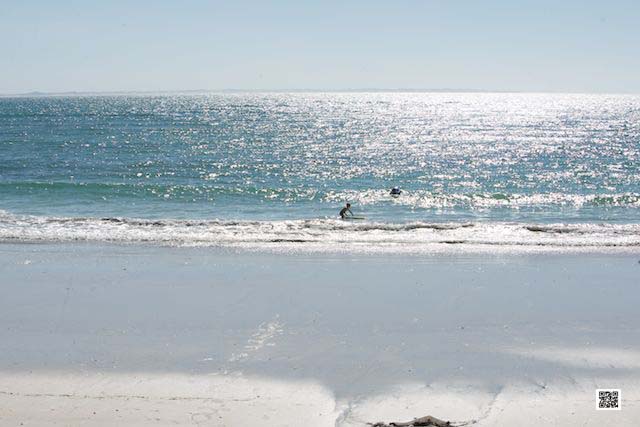
Joseph Woodland died this month at the age of 91 and he is the man who invented the bar code as we find it on anything we are buying nowadays. The invention was made in the late 1940ies and patented 60 years ago. Woodland, a graduate student, worked together with his classmate Bernard Silver on the technology, but it was Woodlands experience as a boy scout and sitting for months on the beach in Miami what brought the breakthrough.
When the work didn’t progress at university he quit and spent a winter in Miami Beach where he was sitting the whole day on the beach thinking. And then suddenly the puzzle fell into place. The knowledge of the simple Morse code, he learned as a boy scout, and running his fingers through the sand made him suddenly draw lines with four fingers, realizing that these lines could be wide and narrow depending on the information they carry and the bar code was found.
Woodland and Silver were ahead of their time and the scanning technology was not yet ready to apply the invention for mass production. They sold their patent for USD 15,000. That was all what they got for it ever, besides the honors from the academic world.
But what is the essence and what does it tell photographers? Your way of photographing might be different than what anybody else is doing and what no photography course is teaching, but it doesn’t mean that it is no good. You might just be creative and ahead of your time. As Woodland did, be yourself and follow your intuition, your path. There might be a point that all puzzle pieces will fall into place. Well, and don’t give away your art to quickly and to cheap, at least if you are in the position to wait. You are creating something with every photo you take, worth attention and respect.
Keep going!
Source: The New York Times, read the full article here
Ute Sonnenberg for www.rohoyachui.com
Surprising Photography: It's Real
20/12/12 19:10 Filed in: Photography & Art
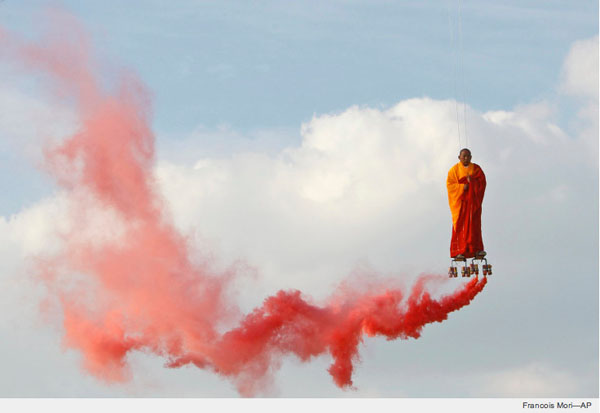
This monk traveling the sky on magic powered, red smoke exhausting, like roller blades looking devices might be very tempting to be thought being photoshopped, but its not. It’s real. This is what the Chinese artist Li Wei performed at La Villette in Paris in March 2012.
And this one, president Obama holding a crystal ball in his hands looking for the future of the world, which could be a typical example for photoshopping, and its not. Also this one is real.
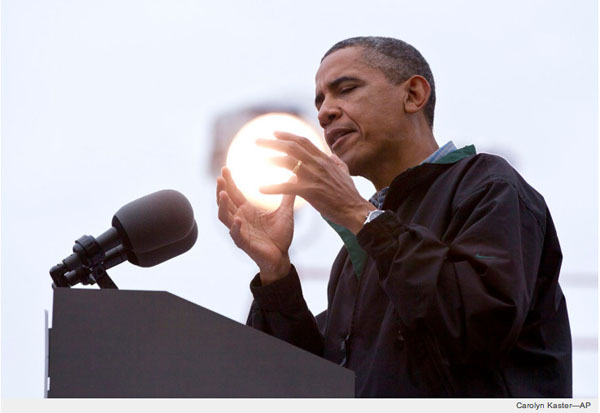
These two images are from the TIME Magazine’s TIME Picks of the most surprising photos of 2012. They are a wonderful example how real moments hold the most beautiful surprises and one only needs to see them, well and press the shutter at the right time. But they are there and it’s again a pure question of seeing.
Keep your eyes open and look for the surprise and captured it.
Happy snapping!
Ute Sonnenberg for www.rohoyachui.com
The Downside of Photo Apps: Instagram
19/12/12 15:51 Filed in: Photography & Art

It was so much fun, snapping away with Instagram, having fun choosing a fancy filter and sharing it right away with your social network. That was almost a year ago and many has change since then.
It started with the photo app getting slower with every update. Somehow they managed to make the app more complicated with the same features. Just so many steps have to be completed and decisions to be made before being able to shoot the next photo.
Then Facebook bought Instagram for an astronomic amount of money and the updates felt more and more like Facebook strategy of tightening up the service for total control and merger with the social network. Now the next step was taken with the new user terms and conditions with as a result a huge outcry of the Instagram users from photo journalists to National Geographic and everyday snappers. Instagram can sell your images without telling you for advertising, and you won’t see any payment, you won’t even know.
It is a very confusing and disturbing matter. National Geographic as paused their Instagram account and might erase it, if the terms are indeed of that meaning. People went onto the streets to protest against it and a whole wave of blog posts is trying to explain what’s going on.
Most worrying is also the mention that the Instagram terms are pretty much the same now as the Facebook terms, which would mean that Facebook can sell you photos without telling you and mostly using them as they wish.
Where is this going? It is like anything people like, enjoy and love is kidnapped, held hostage and abused by greedy powers or going more the psychological path, narcissistic powers?
Read more about it in the listed blog posts below:
Instagram changes terms of service, but will pro photographers flee anyway?
Insta-gone?
No, Instagram can't sell your photos: what the new terms of service really mean
Why I Quit Instagram
Instagram Clearly Hates You, So Quit
New Terms of Use for Instagram: Selling Your Photos Against Your Will
Why Instagram is Great for Photographers, and Why You Shouldn’t Use It
Facebook Poisons Instagram For Its Most Valuable Users: Real Photographers
Ute Sonnenberg for www.rohoyachui.com
Paperwork Help to Sell Your Images
18/12/12 17:03 Filed in: Photo Tips
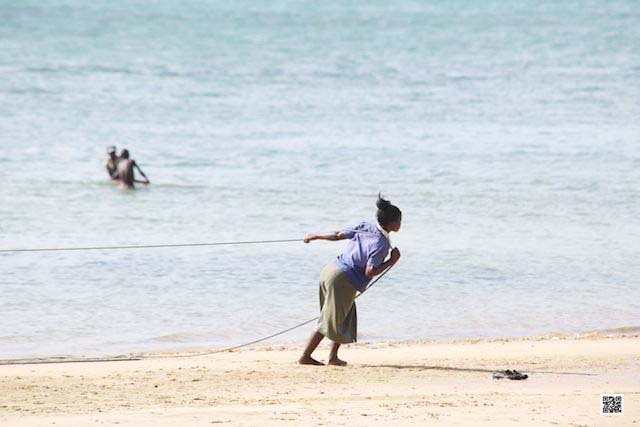
Have you ever been in a situation that you wanted to sell an image, but were unsure if you could, because there were people in it and houses? If you had liked to sell it to Getty Images, they would have told you immediately that you would need release forms to do so. A release form for each person, also miners and for each house would be needed.
Do you have release forms right at your disposal whenever you walk the streets? Probably not and even finding out where to get them can be a mission. At least it could be a mission, but there is help. Getty Images itself provides release forms to be used by photographer who want to submit images to them. And there is also Docracy, a website that provides all relevant forms for photographers, put together by professional photographers in the United States. Even contracts when you want to work with galleries and other really important forms are available on their website to make your life easier and safe with regards to your rights and a proper payment.
You might want to consult an attorney anyway, but the forms make you already wiser for the conversation with the legal professionals.
And now the probably most difficult part of having the forms with you whenever you are out to snap away. You will really not find that person ever again you just snapped at the park, just let the person sign the form and you are safe when selling the image.
Think practical and make it easy for yourself.
Happy snapping and selling!
Ute Sonnenberg for www.rohoyachui.com
Hone your instincts: Joel Meyerowitz, Photographer
06/11/12 20:09 Filed in: Photography & Art

A remarkable story to encourage all photographers and almost photographers: the life journey of the New York City–based photographer Joel Meyerowitz.
In 1962 Meyerowitz was working as an art director at an advertising agency when he watched photographer Robert Frank working on an advertising photo shoot. It proofed to be a cathartic moment for Meyerowitz. Back in the office he told his boss that he wanted to be a photographer.
“On the way back to the office, Meyerowitz walked the streets of New York for more than an hour. “I felt like I was reading the text of the street in a way that I never had before,” he says.
When he returned to the office, Meyerowitz told his boss, Harry Gordon, that he was quitting. He wanted to be a photographer. Gordon then asked him a crucial question: did he have a camera? The answer was no, so Gordon lent him a 35mm camera and Meyerowitz embarked on the great journey of his life.
That first day with Robert Frank served as more than just a catalytic inspiration; it laid the foundation for how Meyerowitz would record street life. He bobs and weaves through the throngs of people, searching for that serendipitous moment that becomes a great photograph.
When he is shooting on the street, there isn’t much time to contemplate each moment. “Photography takes place in a fraction of a second,” Meyerowitz says. “There isn’t a lot of time to think about things. You have to hone your instinct. You learn to hone that skill and timing so you’re in the right place at the right time.” Although he has made images that have moved audiences for decades, that has never been his true motivation. “I’m not out there to make another ‘great picture,’” he says. “I’m really out there to feel what it feels like to be alive and conscious in that moment. In a sense, the record of my photographs is a record of moments of consciousness and awareness that have come to me in my life.”” (via Time, by Nate Rawlings)
This life changing moment happened 50 years ago. For this anniversary Meyerowitz compiled hundreds of images into a two-volume book, Joel Meyerowitz: Taking My Time (Phaideon Press).
From November 2, his work is been displayed at the Howard Greenberg Gallery in New York.
Be inspired!
Ute Sonnenberg for www.rohoyachui.com
Travel Memories 2008: On Safari in Africa - Day 7
14/10/12 12:19 Filed in: Travel & Inspiration
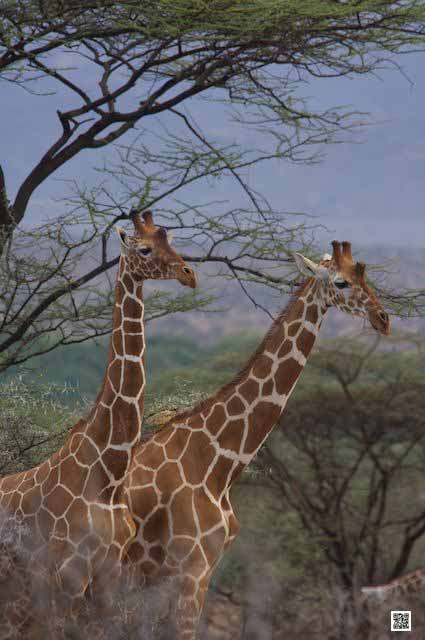
I woke up, still tired and exhausted, my mattress surrounded by rainwater. I had enough of that. This had to be solved.
We wouldn’t have a game drive this morning. The vehicle had to be fixed and the leaking tents had to be replaced. Paul and I went off to find a signal. He wanted to call the office in Nairobi and finding a signal for the cell phone was quite a mission. I was running out of patience and told him, enough now we are going to use the sat phone. The sat phone can be tricky as well, but we managed to get a signal and I got the operational manager on the phone. I made clear that the situation is unacceptable and that they have to send over new tents. He promised he would do that and the tents would arrive with the first plane. Next thing was the vehicle. The tank needed to be welded and Samburu Lodge workshop could do it. We drove there and I decided to have breakfast at the lodge. It didn’t take long and Paul came to tell me that the generator was switched off, so no welding and we had to come back after lunch. We went back to the camp and I collapsed on my “bed”, still surrounded by water. It was just so annoying that the equipment didn’t meet the basic needs and I was very angry and knowing that that wouldn’t help either.
Paul went to the airstrip to fetch the new tents. He came back with flysheets. I thought I must explode when I saw that. These flysheets were lighter, but to small to cover the tents and new tents were promised. I fetched my sat phone and called the operational manager and the owner. Nobody answered the phone. After all it was Sunday.
We tried to make something out of it and some kind of a weird flysheet construction covered Paul’s and my tent. It had to do till Monday. Phoning the office would be first thing in the morning.
After lunch we went back to the lodge to fix the fuel tank and we could go off for the game drive at least in the afternoon. Samburu is so beautiful and that made the disturbance by poor equipment even more annoying. Samburu’s landscape is breathtaking and the light was awesome because of the rain. Everything looks soft and bluish, which gives completely different shots. Eventually the animals made our day by rewarding us with beautiful sightings like fighting giraffes in front of a blue/gray sky and the green of the acacias. After all a peaceful closure of the day.
Ute Sonnenberg for www.rohoyachui.com
Send Yourself a Photo to the Future
12/10/12 11:30 Filed in: Photography & Art | Intuition
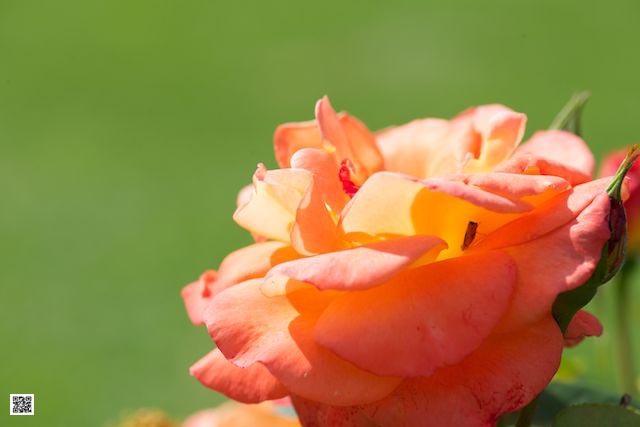
There is the iPhone photo app One Momento, an art project that allows you to take only one picture. This picture is uploaded to a gallery with all one-image-photo-app-images, aiming on 250,000 images, in a way a collage of images from 250,000 photographers.
That one image idea is quite interesting and can inspire more art applications. How about taking one image today, saving it in a separate folder on your computer or cloud and making a note in your calendar to open this image on a certain day in the future? What will the image tell you? It is like writing a letter to yourself, posting it and receiving the letter on a certain date in the future and it most likely will give you exactly what you need at that very moment, some encouragement, consolation, joy, congratulations or support.
Wanna try? Take a photo or choose one from your image gallery, seal it in a folder on your computer, pick a date in your calendar and make an appointment/note with notification. Then let go and forget about it. It will make itself know when its time to open it again.
Ute Sonnenberg for www.rohoyachui.com
Infinite Light - Inspired by John Lautner's Architecture
11/10/12 13:20 Filed in: Photography & Art

American architect John Lautner was portrayed by the amazing documentary Infinite Space, which could easily has been named Infinite Light, because his architecture allows infinite light in all his houses by connecting them to the natural environment they are located in on the most beautiful places in the world.
What does his infinite space approach mean for photographers? In the first place think infinite, allow your imagination infinite space and in the second place use the infinite light available to all of us. Play with it and explore how light creates infinite spaces within spaces. Interior photographers will be conscious about that, yet it is an excellent tool for all photographers to learn about light. How light makes spaces infinite although they have real walls and how light can create smaller spaces within infinite spaces like nature.
Get a glimpse of infinity from the Infinite Space trailer and for the complete experiences get hold of the documentary dvd.
Explore your spaces.
Ute Sonnenberg for www.rohoyachui.com
Are all Photographers Don Quixotes?
28/09/12 07:33 Filed in: Photography & Art

Don Quixote: Dost not see? A monstrous giant of infamous repute whom I intend to encounter.
Sancho Panza: It's a windmill.
Don Quixote: A giant. Canst thou not see the four great arms whirling at his back?
Sancho Panza: A giant?
Don Quixote: Exactly.
(From Don Quixote by Miguel de Cervantes )
Have you ever experienced being with friends on a trip, watching a sunset and all of you are photographing the beautiful cloud formations. Each of you will have different photos and you might find yourself explaining your friends that you see a face in the clouds or a lamb or an old man. It might need some efforts to show them where you see it and then in return they start telling you what they see. At the end all of you see the faces and shapes in the pictures of the clouds all of you captured.
Imagine you are by yourself photographing the clouds in sunset and you post it to your social media pages. How many people will see the face and the lamb in the cloud? And how would you be surprised what else they see in your photo? They might not see the lamb and the face, yet all would see the photographer, the moment, the creativity and maybe a giant.
Ute Sonnenberg for www.rohoyachui.com
In the Ray of Light: Nick Ut & Kim Phuc
25/09/12 16:28 Filed in: Photography & Art
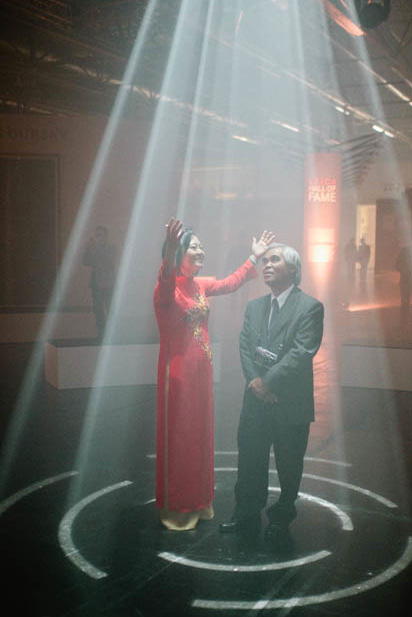
Their lives are connected; maybe even before Nick Ut took the iconic photo of the Napalm Girl, definitely since he took the image that helped to end the Vietnam War.

And now they are here, together in this ray of light at the Exclusive Leica Launch Party on the Photkina last week, the photographer and his “subject”, Kim Phuc, the “Napalm Girl”. How must that feel standing there together after all these years? Does one relive the moment of the initial contact? How must it be for the photographer, looking at the woman he photographed as a child in a very traumatic situation. How must it be for Kim Phuc, looking into the eyes of the man who captured her in a very vulnerable situation with dignity and respect?
Only they know the answers. But maybe all of us have moments we remember, taking a photo that touched us deeply and how we felt or would feel to meet the “subject” again.
Imagine your ray of light.
Ute Sonnenberg for www.rohoyachui.com
Photo from photokina: Michael Zhang
Photo Napalm Girl: Nick Ut
Travel Memories 2008: On Safari in Africa - Day 4
23/09/12 10:44 Filed in: Travel & Inspiration | Photo Safari
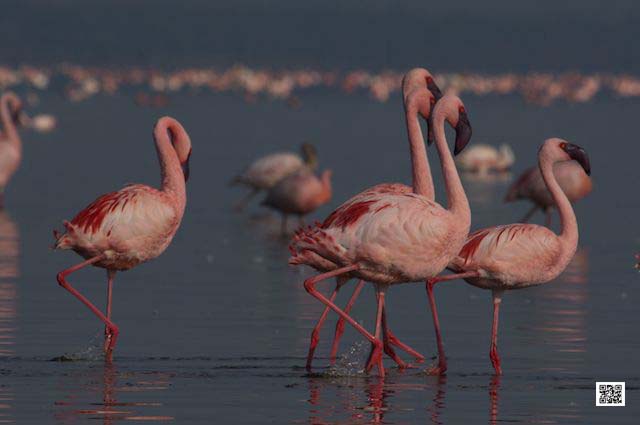
The night was quiet. I heard again the breathing next to my head, which was a hippo according to Alex, grazing at night around the tents.
We left the campsite at about 8.30 a.m. and headed towards Nakuru, our next stop. Paul said we are taking a short cut to Narok, but this wasn’t really the case. We headed away from Narok and made some kind of a circle back onto the tar road. My guess was that we had to avoid driving through the reserve, like we did on the first day, The itinerary was mixed up and we hadn’t paid the park fee for the last day. Anyway our drive brought us along lots of animals and led us through a flood plane, which was the less nice part. All black cotton soil and wet, which is like driving on wet soap and one makes a good chance to get stuck. But we made it without bigger difficulties and hit the tar road to Narok. From Narok we followed the road back to Mai Maihiu and instead of turning right to Nairobi we headed north towards Naivasha and Nakuru. The drive was without any incidents, at least for us. There was a turned over Matatu on the side of the road. Fortunately nobody seemed to be hurt, although the faces looked in shock.
We arrived in Nakuru and to my surprise the Lake Nakuru National Park is only 10 min away from the city centre. The campsite was just behind the gate next to the ranger post under the cover of fever trees and in sight of the lake with its pink ribbon of flamingos along the shore. It was so tempting to just go there and have a look at the flamingos, but Paul reminded me that just recently a ranger got killed by a lion just in front of the ranger post.
We pitched camp and it was raining again. There was supposed to be somebody from the office in Nairobi with flysheets and a new fridge. He arrived just before dinner and the flysheets turned out to be impossible to use. They were big and heavy, made from some kind of synthetic leather, you use in car interiors. The first difficulty was that we needed trees to hang on the sheets, because there were no poles. When we fixed that, the sheets started soaking water and became even heavier what made them hanging down on the tent which collapsed, because of the weight. Anyway, it was late, we were tired and I just wanted to sleep in a not leaking tent. We postponed the sheet issue to the next morning.
We had dinner and suddenly a truck arrived on the campsite. Such a big lorry transformed into an overland bus. I learned that these trucks are doing tours from Nairobi to Cape Town and stop at the campsites in the National Parks. It was like watching a show. Maybe about thirty people pitched camp and had dinner. This happened like a military operation. Always two people fetched and pitched a tent until the camp was set, without any space between the tents and in a correct circle around the cooking area. It took them 15 minutes to do that. Then a designated group started cooking other groups looked after the table settings and other jobs that had to be done. There was no waste of time and manpower. After dinner within 15 minutes everybody was in the tents and ready to sleep. I was wondering if those people were on holidays.
We had an early night too. It was a long day.
Tweet.
Ute Sonnenberg for www.rohoyachui.com
Susan Sontag & Goethe: Photography & The Sorcerer's Apprenctice
18/09/12 12:11 Filed in: Photography & Art | Philosophy

“Recently, photography has become almost as widely practiced an amusement as sex and dancing – which means that, like every mass art form, photography is not practiced by most people as an art. It is mainly a social rite, a defense against anxiety, and a tool of power.” (Susan Sontag, On Photography, in 1971)
Photography is part of our daily life. It gives us joy, lets us express our creativity and makes us grow as artists and persons. It captures moments for us and lets us relive them when we would like to experience them again. It captures the love for our families and visualizes our dreams. Photography is magic, accessible to everyone.
Magic needs to be wielded with care and responsibility. Like in Goethe’s “The Sorcerer’s Apprentice” it can go wrong and the magic tool gets out of control. One of the recent examples is the death of the American ambassador in Libya. When his body, most likely already dead, was held up and about to be carried away, bystanders took photographs of him in this vulnerable moment and the New York Times seemed only be too happy to publish them.
In the Netherlands paramedics have problems doing their work, because bystanders interfere with them in order to take pictures with their cell phones from, for example car accident victims. And they even get violent when police or paramedics try to keep them away.
On the other side of the scale the topless photos of the Duchess of Cambridge are silly (who hasn’t seen a pretty young woman topless on a beach) and intrusive to the private life of a person.
And now with all these “sorcerer’s apprentices” around how do we stop this?
Most likely there will be no easy way to stop this. It will take time to create a general consciousness of respect and dignity, a consciousness that something powerful as photography needs the “master” and not the “apprentice” to unfold its entire beauty and strength to serve mankind as a tool of growth. And yet, photography itself is the tool to enable people to develop exactly this consciousness. One got to drive a car in order to learn driving and one got to practice photography in order to become a “master”.
Happy growing.
Tweet.
Ute Sonnenberg for www.rohoyachui.com
Travel Memories 2008: On Safari in Africa - Day 3
16/09/12 15:23 Filed in: Travel & Inspiration | Photo Safari

Early wake up call at 5.30 a.m.. I wanted to shoot a sunrise. We were up quickly and off into the park. Paul had a tree in mind which would make a perfect picture with the sunrise in the back. We were racing. The sun came up quickly. And there was the tree. One of those beautiful umbrella trees set out as dots on the big planes of the Mara. While racing there I had mounted the camera on the tripod and was ready to shoot when we got there. It was awesome. This gracious tree in the golden light. I was happy. It was a good start of the day.
While getting back into the vehicle we heard a lion roaring. We thought immediately of the pride of lions we had left the previous night and headed towards the area. Unfortunately when we got there we only had to follow a trail of vehicles. The lions had settled around a mount. The females and males were lying around in the shade of bushes. The cubs were climbing the mount with their full tummies. They must have had a kill.
It should have been ideal for photography. Blue sky, sun, a pride of lion with playing cubs, but it was hectic. Many vehicles were there and made a half circle around the pride. But when more vehicles arrived the circle became close to a full circle and this is not the background for the lions you want. Some vehicles arrived and drove through the whole scene, the drivers were sometimes very close to drive over a lion’s tail, but it didn’t look like the lion were irritated by that. Maybe we were a sighting for them and they were amazed what a competition was going on in front of their eyes.
In sight a few hundred meters away, another group of vehicles was watching something. The group was growing, so we assumed it must be a cat and they were all looking at a tree, so it must be a leopard. We left the crowded lion sighting and drove over to the tree. Yes, there was a leopard in the tree, but the sighting gave only space for two vehicles and the visual was 2 out of 5. Nonetheless there were six vehicles fighting for a good view on the leopard. It was ridiculous and we decided to come back later and drove back to the lion. We were not the only one to drive back and forward between the lion and the leopard. It was an absurd scene of vehicles racing between the two sightings trying to get in a good position. The whole scene felt like it was all about the humans and their competition and not about experiencing the beauty of wildlife. After a last attempt to get to see the leopard we left. A vehicle had parked in front of the animal, blocking the space for another one, people sitting on the roof and moving constantly, so that parking in second row made no sense too. I had enough.
We heard that three cheetah males had been seen and we went there. It was in a different area and a bit of a drive. Another vehicle followed us. It was a guy on his own cruising around in his Land Rover. He asked Paul to stop and talked to him in Swahili. After that we carried on and he tailed us. I asked Paul what this is about and he told me that the guy doesn’t know the way to the cheetahs and asked him to guide him there. I stopped the car, stepped out, walked towards the Land Rover and stopped him. What did he think speaking sneaky in Swahili to Paul and using a guide I had paid for to get to the sighting. I wouldn’t mind, but ask me too. Obviously the piled up anger from the vehicle sighting race of the morning came onto that guy. I apologized, but since then he kept his distance.
The cheetah were in rough territory. Rocks were lying everywhere and access was difficult. Also there the same story. The sighting gave space for two vehicles and one was blocking it. Sometimes I’m not sure if the drivers just don’t know how to handle a sighting. This one felt like that. The cheetah were beautiful, but my photographs were not. I guess the emotions of the morning distracted me and I wasn’t focused, but the animals were awesome.
We drove back to the camp to have lunch and a rest. That would be the chance to reset for the afternoon game drive. And it did. The lunch was nice and I had a shower and a nap. I was ready to go out again.
The strategy for the afternoon was to go back to the lion and to see what more is coming on the way. Rain came and the light went bluish and soft. The lion were still wide spread around the mount. We decided not to go anywhere else. Just to stand our ground and see what’s going to happen (there was enough space for about twenty more vehicles). It was lovely. The cubs were playing with their mums, some of the females were taking position on the mount to scan the area for prey and the male lion were lying in the bushes. And then the rain started again. I loved to watch one female who was on the top of the mount, trying to hide her head between her paws against the rain. She closed her eyes, waiting the rain to stop. She was beautiful.
We too closed our “eye”, the hatch and went back to the camp, were leaking tents needed attention and Alex was waiting with dinner.
Ute Sonnenberg for www.rohoyachui.com
Peter Beard & Francis Bacon - Photographer and Painter
10/09/12 19:26 Filed in: Photography & Art
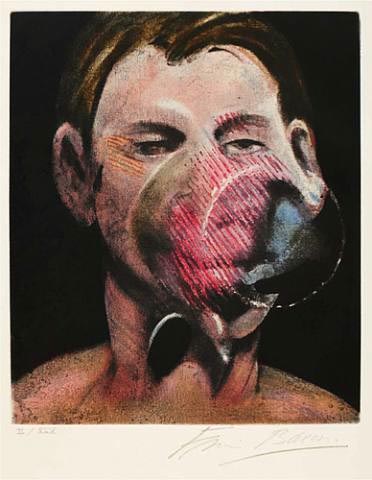
“Sometimes there is nothing better than a bad exposure.” said Peter Beard about photography during an interview with Steven M.L. Aronson and he meant to explain that lots of his photographs happened just by accident, and he was hoping for really good accidents and it turns out his photography is really great.
Beard studied art history at Yale and took color courses with Josef Albers, Neil Williver and Al Katz, but as he says, Richard Lindner and Francis Bacon were his real art teachers later in life.
Peter Beard met Francis Bacon at a presentation of his book “The End of the Game” in London. Bacon had just purchased the book and invited Beard immediately into his studio. Beard took polaroid photos of Bacon’s work. The polaroids became a source of inspiration for Bacon regarding colors and shapes in his paintings and in return Beard learned from Bacon essential things like looking at old masters to learn about light and composition.
A friendship had developed and Bacon painted Beard several times. I dare to say that Bacon’s way of seeing art, reflects in Beards work and is one of the reasons of the mesmerizing impact Beard’s artwork has.
Read more in Peter Beard Trade Edition, available at Taschen and get insights in this creative friendship of two amazing artists.
Image above via HH Fine Art.
Ute Sonnenberg for www.rohoaychui.com
How to Re-Imagine Photographic Opportunities
06/09/12 11:45 Filed in: Photo Tips | Photography & Art

Have you ever had moments that you felt the urge to photograph, but had the feeling that there is nothing around? Like days without sun, again the same garden, not the right equipment to capture that or thoughts like ‘this is anyway not going to be good”. In these moments we might do a lot of imagination, but not the kind of imagination that stimulates us to see and shoot. We might imagine only the downside of everything.
How can we change that? Well, simple enough through photography. We just need to get through this wall of negative imagination and it doesn’t need to be an effort. Just take your cell phone, most likely you don’t even have to move for that, because it’s always with you and start shooting away. Maybe choose one of your photo apps and click and see what comes out of it when photographing your TV. Without even noticing you will be drawn into your photography and the silliest subject will become highly interesting and arty. You just started seeing again and your imagination will be stimulated to artistic heights.
Try it, also when being in the office
Ute Sonnenberg for www.rohoyachui.com
Annie Leibovitz: A Dance with Light
04/09/12 15:42 Filed in: Photography & Art
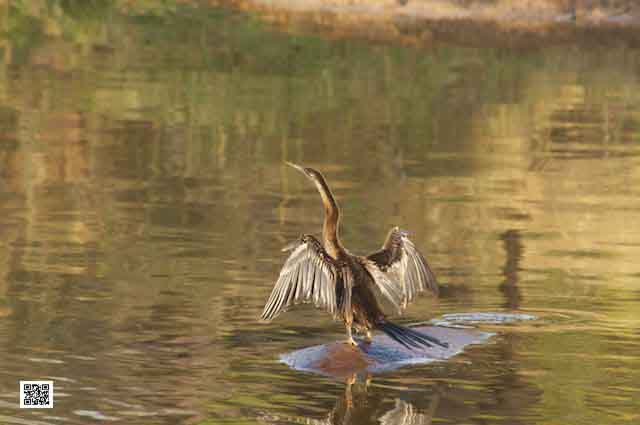
Nature is so powerful, so strong. Capturing its essence is not easy - your work becomes a dance with light and the weather. It takes you to a place within yourself. Annie Leibovitz
Maybe the strongest and most powerful nature is the African bush. Photographing its essence is an intense experience, unleashing energy, imagination, inspiration and creativity. Being on a Photographic Safari is an incredible photographic discovery. It brings us back to our origins and induces strengths we didn’t know we have. And from these places within ourselves it brings us back into daily life radiant and strong. And when a bad day at the office drained this energy, we just look at the images and restore.
And we dance again with light.
Ute Sonnenberg for www.rohoyachui.com
Copyright & Pricing in Photography
03/09/12 10:40 Filed in: Photo Tips | Photography & Art
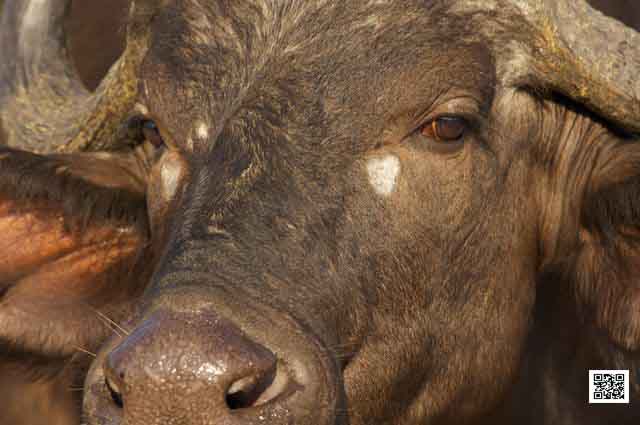
The question of copyright and prices in photography can be a very confusing matter. What are the laws, what rights do I have in the digital era, how can I deal with infringements, who can help and what can I charge for my photography? There are many answers from different sources and there are a few professional sites that really help.
Have a look at the website from EPUK, the platform of the Editorial Photographers United Kingdom & Ireland. Below is a link to their write up on copyright, from the beginnings until today.
EPUK Editorial Photographers United Kingdom & Ireland:
Copyright in the 21st Century:
Let’s start with a brief history. Copyright began about 300 years ago with the Statute of Anne. This law for the first time turned something made of thought into an object that could be owned and traded and which could be regulated by the government and courts. Read more
On the pricing FotoQuote is the tool professional photographers consult for their pricing. It allows easy Rights Managed calculations for all regions in the world and is also used in the Photoshelter galleries.
Here the link to Foto Quote:
fotoQuote Pro is a photo price guide that provides pricing and negotiation information for stock and assignment photography.
Read through it and find what suits you and your photography purposes best. These tools can be very helpful when suddenly asked for an assignment
Ute Sonnenberg for www.rohoyachui.com
The Only Limitation for Your Photography is You
29/08/12 17:19 Filed in: Photo Tips | Photography & Art

What do you think about your own photography? When you show your images to others, do you immediately start commenting them why you did this and this and excusing something you think could have done better?
Our photography shows always something of us and it is for ourselves like looking into a mirror when looking at our images. And if we do not like certain sides of ourselves, we might start limiting ourselves in our freedom of photographing what ever comes up or we wish to retouch our photographs in order to cover the flaws we think we have. But like with thinking our nose is skew and everybody will notice, we might be the only one seeing a flaw in the photograph. And what is actually a flaw? Nobody notices a skew nose in a fascinating personality and a blur photo can be the most fascinating image, magnetizing a room.
When you love a photo, it is a great photo and your heart is always right. Listen to it and you will enjoy the freedom photography has to offer.
Ute Sonnenberg for www.rohoyachui.com
Henri Cartier Bresson: A Photo Offers Itself.
27/08/12 12:17 Filed in: Photography & Art

A photograph is neither taken nor seized by force. It offers itself up. It is the photo that takes you. One must not take photos. (Henri Cartier-Bresson)
You might have experienced walking with your camera in a forest, on a beach or in a city and suddenly you see it, take up your camera and shoot. It’s like a composition hits you. Or you suddenly have the feeling you need to turn around and there it is, the photo, the wonderful sunset that made you turn around, although you didn’t see it, it made you turn around, the photo tapped on your shoulder, it offered itself to you and you love it. Its that kind of photo we call a “perfect photo”.
Essentially it is the light that creates the photo and your role is to listen, see and press the shutter.
Sit still and sense what photo is tapping on your shoulder right now. Look at it.
Ute Sonnenberg for www.rohoyachui.com
How to Do Marketing for Photographers
21/08/12 19:32 Filed in: Photography & Art
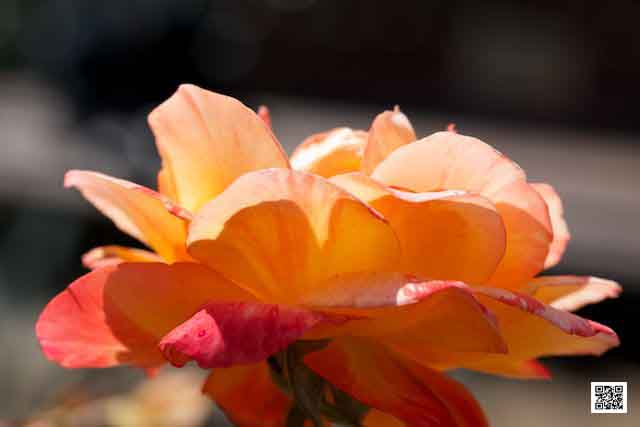
Marketing is often something photographers are struggling with, because they usually focus more on the artistic and photographic skills to develop and grow in. But we all got to live and pay for our groceries, so some money needs to come in as well.
There are great marketing blogs to help understanding how marketing works, like the Hubspot blog, but this is a general blog for marketers and not specific for photographers. A very good source of knowledge and advice for photographers are the Photoshelter Free Guides on a wide range of marketing and business subjects especially for the photographer’s needs. They translated the general marketing tools into photography specific tools, suiting the small size photography business as well.
Check it out; they are great.
Ute Sonnenberg for www.rohoyachui.com
Olympics Emotional Analogy in Photography: Victory
12/08/12 11:43 Filed in: Photography & Art

Victory has many faces. For some athletes it might be already a victory to be part of the Olympic Summer Games in London, for others a place in the finals is a victory and for others the winning of the gold medal is the victory they came for. All of them experience that feeling only a victory or success can give, like being on the top of the world.
Fortunately in photography victories can be experienced more easily and more frequently. Every image we love is a victory. It gives us joy whenever we look at it, it can hang on the wall like a gold medal and tells others about our love for photography.
Enjoy snapping your victories.
Ute Sonnenberg for www.rohoyachui.com
Olympics Emotional Analogy in Photography: Resilience
10/08/12 11:41 Filed in: Photography & Art

Isn’t it very interesting watching the more technical disciplines at the London Olympics like long jump, high jump and discus? The participants have a number of attempts for their jump or throw and they seem to need them. How must that feel having 4 invalid jumps and only 2 more attempts left? The most resilient athletes are able to cope with such a situation. They accomplish to focus again and throw out an amazing jump.
Photography is often like a 100-m final with no more attempts left, but there are plenty of situations where resilience is an important ability to have. Think of the simple task of photographing your dog. How much resilience does that demand? He is looking away, running off, putting his nose on the lens, biting the lens, biting in your trousers, putting his ears flat or closing his eyes and to make it worse he is enjoying the whole excitement and attention too. Well, this is a moment to practice resilience. Sit down, put the camera aside and let the whole situation calm down, for yourself and your dog. Let him go and he will start doing his normal thing, that what you actually wanted to photograph and then calmly grab you camera, stay in the background and shoot away.
Ute Sonnenberg for www.rohoyachui.com
Olympics Emotional Analogy in Photography: Perseverance
11/08/12 11:39 Filed in: Photography & Art

All athletes at the Olympic Summer Games in London must be perseverant; otherwise they wouldn’t be there. They managed to set aside everything else, trained hard and conquered challenges in order to participate in this amazing event. And if they didn’t make it this time they have to wait for another four years for the next Olympics.
How perseverant needs a photographer to be? Although photography is easy accessible for anybody and a photo is taken with a quick click on the shutter, becoming a professional photographer, a photo artist or growing as a hobby photographer demands a high amount of perseverance. It can be a process of insecurities, doubts and setbacks before improvement and success arrive. The photographers at the Olympics might be just as perseverant as the athletes they are photographing.
Ute Sonnenberg for www.rohoyachui.com
Olympics Emotional Analogy in Photography: Pain
09/08/12 18:21 Filed in: Photography & Art

It is very sad to see when a player from the Dutch women hockey team gets injured during the first training at the Olympics. Knee injury, over. All the training, commitment and sacrifices for nothing. At that moment there is not only physical pain, there is also a lot of emotional pain. The world seems to end at that very moment.
Is there a way to compare this situation with any situation in photography? There are no Olympic medals in photography, but there is also a lot of commitment, sacrifices and work done to create great images. And there are also moments of great pain, when all the efforts seem to fall into nothing. Finally being on the Galapagos Islands, these incredible animals eventually right in front of you and the camera is not working, broken. At that moment not only the camera is broken, but also the photographer. What to do now?
Allow the pain to be there, give it space and a moment to be. If you don’t, it will push through when you don’t want it to. By giving it a moment it will disappear quickly and you will have all your energy to borrow a camera from another photographer, put in your memory card, take some shots and explore the opportunities to repair or replace your own camera.
Ute Sonnenberg for www.rohoyachui.com
Olympics Emotional Analogy in Photography: Disappointment
08/08/12 11:13 Filed in: Photography & Art
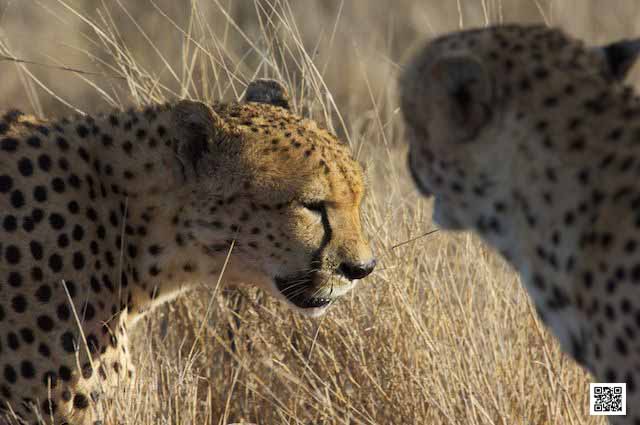
The short cut to disappointment goes through unrealistic expectations. When you are a man and you need 10.5 seconds to run the 100-meter and you expect yourself to be the gold medal winner at the Olympic Summer Games in 2012, you will be disappointed at the finish. Even if Usain Bolt falls ill that day, there are still others to beat you by lengths.
When you experience the feeling of disappointment in photography, ask yourself what you expected to happen and if this was realistic. Did you buy a new camera, expecting everything would go by itself now? Or did you photograph a house in the style you saw in a magazine, expecting that your image would be on the next cover? Reflect on your thoughts that lead to the expectations, what were they based on and what was the outcome. By doing that your disappointment will be converted into realistic plans to accomplish your photography dreams.
Ute Sonnenberg for www.rohoyachui.com
Olympics Emotional Analogy in Photography: Trances
07/08/12 08:14 Filed in: Photography & Art
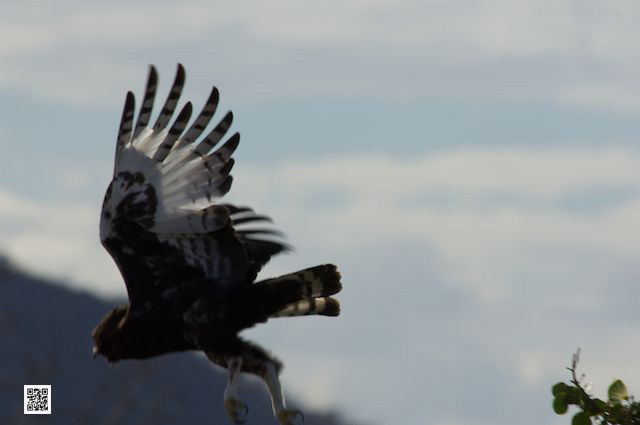
Some of the Olympic athletes look like they are in a trance when getting ready for the start. Swimmers wear already their goggles and headsets with music to induce an even deeper focus trance, blocking out all possible disturbing factors.
How about photographers? Isn’t a photographer in a trance like state when being connected with what he/she is photographing? This state of forgetting the world around you and focusing on the subject and light, walking around it to shoot it from different angles, discovering new perspectives and moving with the light. Photographers can enter this trance like state easily and that makes them vulnerable for dangers like cars approaching, balls flying around and more serious things, just because they wouldn’t notice. Be conscious about that and cover your back before you surrender to the pleasant trance of photographing great subjects.
Ute Sonnenberg for www.rohoyachui.com
Olympics Emotional Analogy in Photography: Expectations
06/08/12 17:03 Filed in: Photography & Art

Over 14,000 athletes are competing at the Olympic Summer Games in London to win one of the 906 medals. How many of them might have arrived with expectations to win a medal or even a gold medal and how many of these expectations were proved not to be realistic? Not all 14,000 participants can win a gold medal and expecting one can spoil the fun and great experience.
How many people are doing photography and how many of them can have their image on the cover of a magazine? Don’t spoil the fun and great joy of doing photography through the pressure of unrealistic expectations. Enjoy your photography and show how you see the world through your amazing work.
Ute Sonnenberg for www.rohoyachui.com
What the Olympic Sports teach Photographers: Diving
05/08/12 13:33 Filed in: Photography & Art

You probably associate immediately diving with depth, depth of field, depth in the picture. Yes, photography has a lot to do with depth. In psychoanalysis diving into the ocean is associated with descending into the subconscious. As a photographer we are surfacing the colorful under water world all the time by visualizing emotions, feelings, moments and ideas. A photo is always a dive into the soul of whatever moment is captured.
Ute Sonnenberg for www.rohoyachui.com
What the Olympic Sports teach Photographers: Beach Volleyball
04/08/12 16:17 Filed in: Photography & Art

Don’t forget to play. Photography’s strength is playing. Play supports creativity and lets art evolve. Play inspires and opens space for innovation.
Rest and relax. Recharge creative energy for exciting photographic events to come, although you might not know about them yet. Wouldn’t it just be to bad being too tiered to photograph the Olympics when suddenly asked to do so?
Ute Sonnenberg for www.rohoyachui.com
What the Olympic Sports teach Photographers: Athletics
03/08/12 19:13 Filed in: Photography & Art

Some assignments might be like a 100-meter race, others like high jumping and others like a marathon. Find out what kind of athlete you are. Don’t try to run the marathon when you are a sprinter and don’t do high jumping when you are afraid of height. Find your strength and go for it. You wouldn’t do underwater photography, if you couldn’t swim, would you? Unless you want to learn how to swim.
Ute Sonnenberg for www.rohoyachui.com
What the Olympic Sports teach Photographers: Cycling
02/08/12 16:51 Filed in: Photography & Art
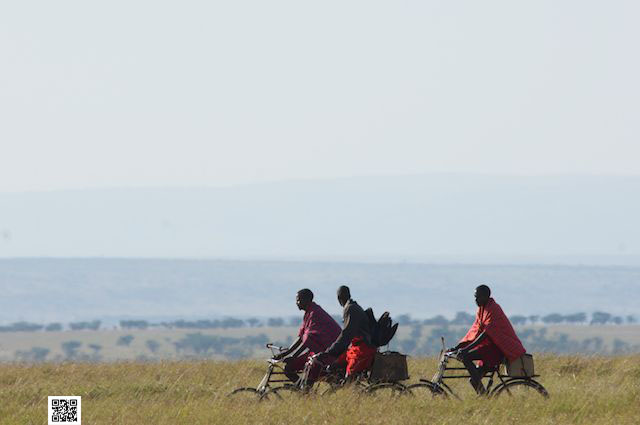
You might feel sometimes like being on an endless climb, followed by a scary decent into endless roads through boring landscapes. Endurance on physical, emotional and mental level is needed to make it to the finish. Keep your spirit high and listen to your body. Maintain your bicycle, your physical health and have a spare wheel. Find likeminded to make a great team.
Ute Sonnenberg for www.rohoyachui.com